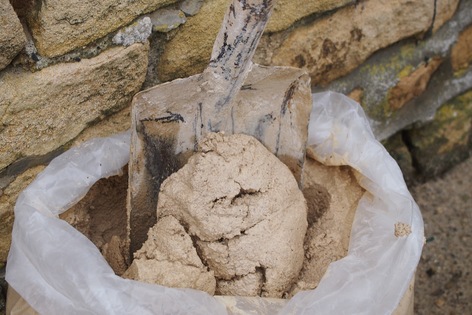In the world of construction, lime has been used as a primary ingredient for centuries, with it continuously used in the present day for both historical and contemporary applications. Used for a variety of benefits, lime is a major constituent in exterior and interior structures and plasters, enhancing the strength, durability, and workability of these finishes. Whilst lime can be used for building conservation and renovation, it is also becoming a popular choice for new builds due to its superior aesthetic properties that it possesses. Used in mortar, render, plaster, putty and more, builders across Britain are rapidly upgrading their materials to lime products to gain the best results possible, whilst also staying environmental and cost friendly. Let’s have a look at some of the key benefits to switching to lime-based products today!
Reduced Cracking and Movement
Incorporating lime in your projects will help the construction withstand the minor movements that occur naturally inside the sedimentary (thermal expansion, contraction, erosion…etc). These movements and changes can cause products to develop large cracks or to ‘debond’ from the substrate, often damaging the substrate. Incorporating hydrated lime into the mixture encourages crack formation to be in the form of gradual ‘micro-cracking’ within the material, rather than large cracking which can appear on the outside of the material over time. These micro-cracks therefore repair themselves naturally by a process of hydrated lime diffusing into these tiny fissures created naturally and then hardening by reacting with atmospheric carbon dioxide to form calcium carbonate (limestone). This process is commonly known as ‘autogenous healing’, the process of concrete to repair in the presence of moisture (our lime products). This will ensure your project and the materials used will be sturdy and strong for a prolonged period, whilst also continuing to look aesthetically pleasing with the reduced amount of natural cracking and movement.
Ecologically and environmentally friendly
- Lime has less embodied energy than cement
- Free lime absorbs carbon dioxide in the setting process of carbonation
- Lime is produced on a small and cost-efficient scale
- The gentle binding properties of lime enable full re-use of other materials
- Small quantities of lime can protect otherwise vulnerable, very low energy materials
- Using less embodied energy than cement with the benefit that it can be produced on a small scale
- Can survive harsh weather conditions, so the environment will not be damaged through collapsing construction
Moisture movement, frost resistance and durability
The improved quality of the bond, and absence of large (or small) cracks, which comes from incorporating hydrated lime helps to reduce the risk of water ingress. This is when water infiltrates your project unknowingly. This term can also be used to describe the penetrating damp that can permeate some properties. Common signs that you have water ingress in your project is the development of mould and damp patches. However, mixtures containing appropriate proportions of hydrated lime have the ability to transmit water vapour (vapour permeability) than cement-only mixtures. This helps to stabilise the internal humidity of a building by absorbing and releasing moisture. This makes for a more comfortable environment and reduces surface condensation. This helps moisture to dissipate, allowing the structure to ‘breathe’ accordingly, therefore reducing any risk of frost damage due to saturation. Once again, this maintains the durability of the rock. So much in fact that even Caesar’s Tower at Warwick Castle has stood the test of time for over 600 years, with many cathedrals across the country and worldwide standing significantly longer. An outstanding example is the Pantheon Temple in Rome which has a lime concrete dome spanning over 43 metres (142 feet). This has survived for nearly 2000 years!
These are just some of the many benefits of using our range of lime products we have in stock. Lime-based products are easy to work with, remaining smooth and malleable, and they give a beautiful finish that develops a rich patina over time. Why not try it today? Check out our range of products now!

